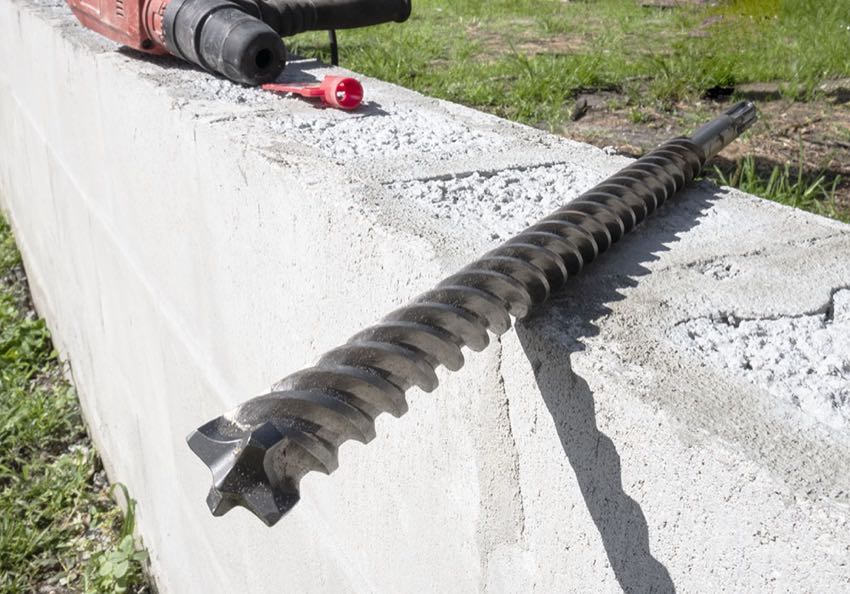
Concrete is one of the most commonly used materials in construction, making it essential for professionals and DIY enthusiasts alike to know how to drill into it effectively. Choosing the right concrete drill bit is crucial to ensure clean, accurate holes and to prolong the life of your power tools. With a seemingly endless array of options available, it's easy to feel overwhelmed when trying to select the perfect bit for your project. In this comprehensive guide, we'll break down the key factors to consider when choosing a concrete drill bit and provide expert advice to help you make the best decision for your needs.
Understanding Concrete Drill Bits
Before diving into the specifics of concrete drill bit selection, it's essential to understand the unique properties of concrete and how they impact the drilling process. Concrete is a dense, hard material composed of a mixture of cement, aggregate, and water. Drilling into concrete requires a specialized bit designed to withstand the high levels of force and friction generated during the process.
A concrete drill bit, sometimes referred to as a masonry drill bit, is designed with a carbide tip that can withstand the abrasive nature of concrete. The carbide tip is brazed onto a steel shank, which is then inserted into the drill's chuck. When drilling into concrete, it's essential to use a hammer drill or rotary hammer, as these tools provide the necessary impact force to break up the concrete while the bit's helical flutes remove debris from the hole.
Types of Concrete Drill Bits
There are several types of concrete drill bits available, each with its own unique features and applications. The most common types include:
#1. Standard Masonry Bit: This is the most basic type of concrete drill bit, featuring a carbide tip and a straight shank. These bits are suitable for light-duty concrete drilling tasks and can be used with a standard hammer drill.
#2. SDS (Slotted Drive System) Shank Bit: SDS shank bits are designed for use with rotary hammers and offer improved performance over standard masonry bits. The SDS shank allows for a more secure connection between the bit and the drill, reducing the risk of slippage and improving drilling efficiency.
#3. SDS-Max Shank Bit: Similar to the SDS shank bit, the SDS-Max shank bit is designed for use with larger rotary hammers and is suitable for heavy-duty concrete drilling tasks. The SDS-Max shank provides an even more secure connection between the bit and the drill, ensuring maximum power transfer and drilling efficiency.
#4. Spline Shank Bit: Spline shank bits are another option for heavy-duty concrete drilling, featuring a shank with multiple splines that provide a secure connection to the drill. These bits are typically used with large rotary hammers and are suitable for demanding applications.
Selecting the Right Bit for Your Project
When choosing a concrete drill bit, there are several factors to consider:
#1. Material: Ensure the bit is specifically designed for drilling into concrete, as using a bit designed for other materials may result in poor performance or damage to the bit.
#2. Shank Type: Select the appropriate shank type based on your power tool. Standard hammer drills require a straight shank, while rotary hammers require an SDS, SDS-Max, or spline shank bit.
#3. Bit Diameter: Choose a bit with the correct diameter for the hole you need to drill. Using a bit that is too large or too small may result in an inaccurate hole size or damage to the bit.
#4. Bit Length: Consider the depth of the hole you need to drill and select a bit with an appropriate length. Longer bits are available for deep drilling applications, but using a bit that is too long may reduce drilling efficiency.
Tips for Successful Concrete Drilling
#1. Use the Correct Power Tool: As mentioned earlier, it's essential to use a hammer drill or rotary hammer when drilling into concrete. These tools provide the necessary impact force to break up the concrete and create a clean hole.
#2. Start Slow: Begin drilling at a slow speed to create a pilot hole that will guide the bit and prevent it from wandering.
#3. Apply Steady Pressure: Apply consistent pressure while drilling, but avoid pushing too hard, as this may cause the bit to overheat or become damaged.
#4. Keep the Bit Cool: Concrete drilling generates a significant amount of heat, which can cause the bit to wear out quickly. Periodically withdraw the bit from the hole to clear debris and allow it to cool.
#5. Use a Center Punch: If you're having trouble keeping the bit from wandering, use a center punch to create a small indentation in the concrete that will help guide the bit.
Caring for Your Concrete Drill Bits
Proper care and maintenance of your concrete drill bits will help prolong their life and ensure optimal performance. Some tips for maintaining your bits include:
#1. Clean After Use: After each use, clean the bit with a wire brush to remove any debris or concrete dust.
#2. Store Properly: Store your bits in a protective case or holder to prevent damage from contact with other tools or materials.
#3. Inspect Regularly: Periodically inspect your bits for signs of wear or damage, such as a worn or chipped carbide tip. Replace damaged bits promptly to avoid further damage to the bit or your power tool.
Conclusion
Choosing the right concrete drill bit is essential for successful concrete drilling projects. By understanding the different types of bits available, selecting the appropriate bit for your specific project, and following proper drilling techniques and maintenance practices, you can ensure clean, accurate holes and prolong the life of your bits and power tools. With the right bit and proper technique, drilling into concrete doesn't have to be a daunting task – it can be a straightforward and efficient process that yields professional results.
